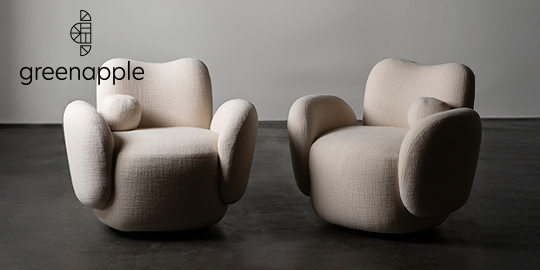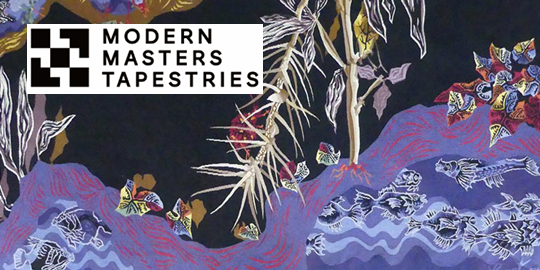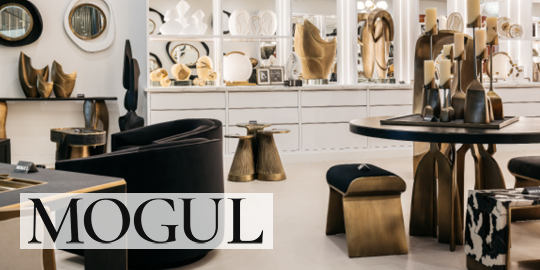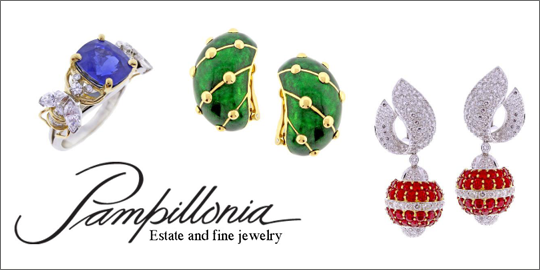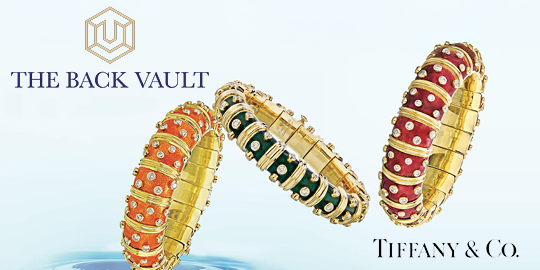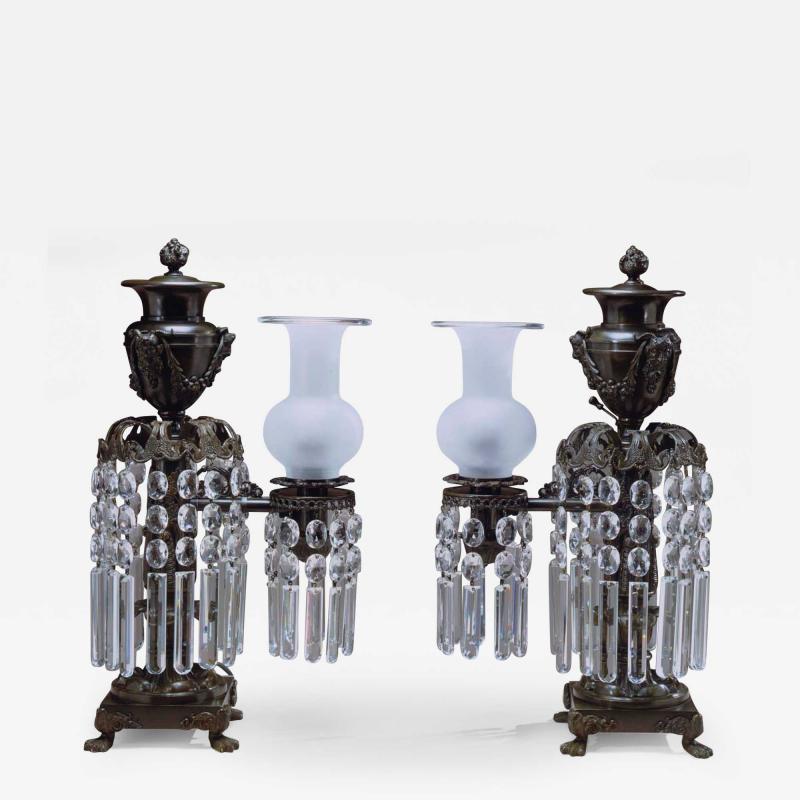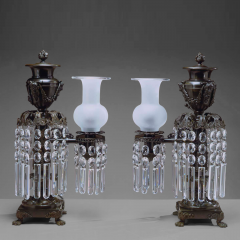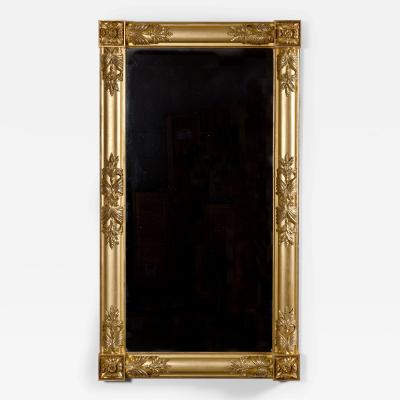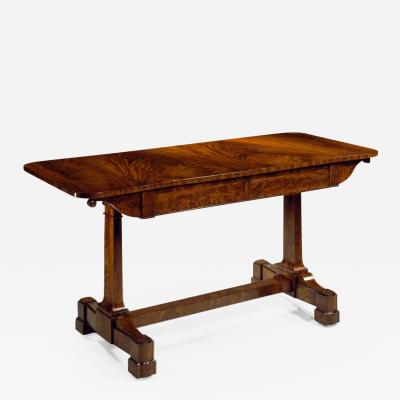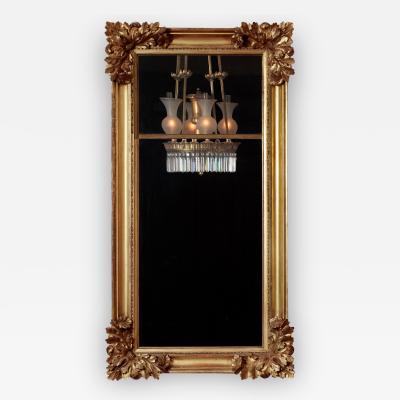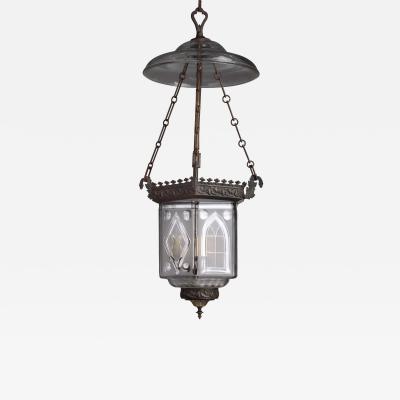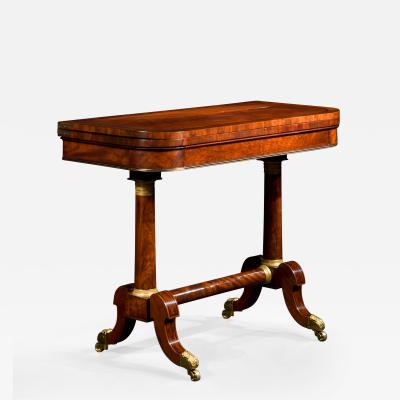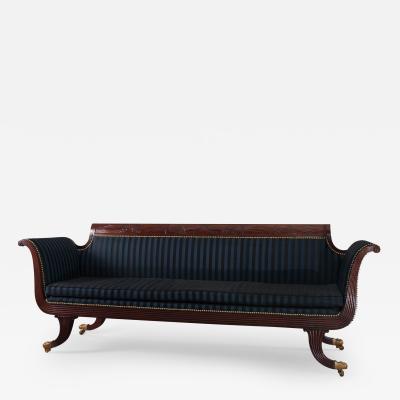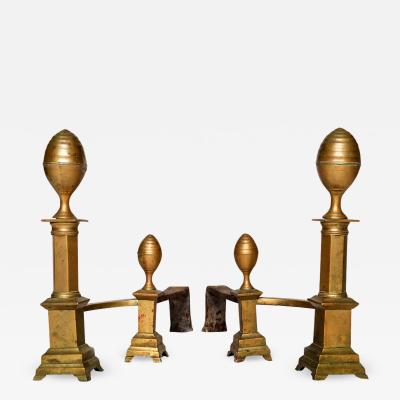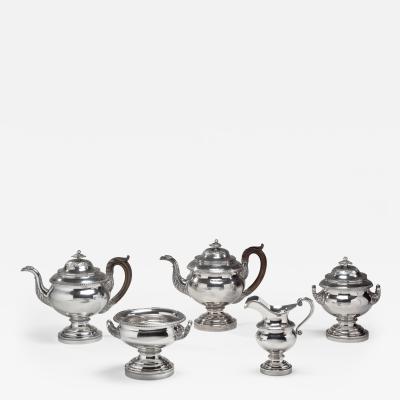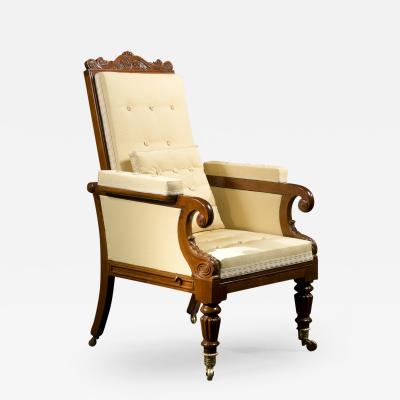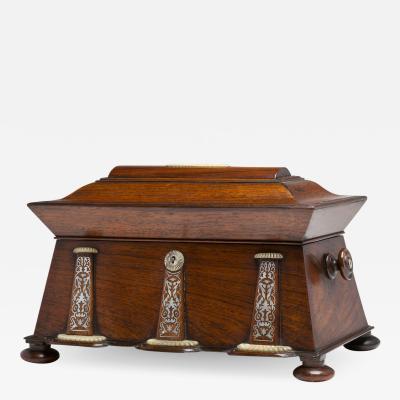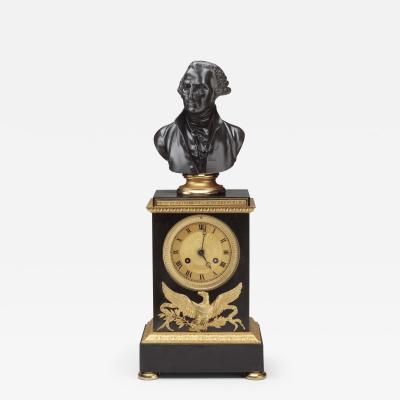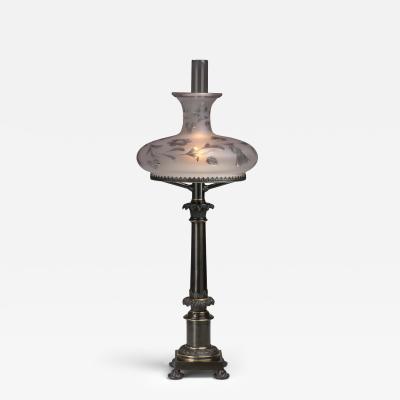Listings / Furniture / Lighting / Table Lamps
Pair of Patinated Bronze Argand Lamps
-
Description
Attributed to Phipson & Lambley (active, 1828-39)
The urn-form oil fonts with flame finials and garland decoration with Satyr masks above a column with appliqués and a prism canopy comprised of opposing griffons on a plinth base raised on animal paw feet.
The attribution is based on labeled lamps by John Phipson and Abraham Lambley at Winterthur Museum that have an identical font.
Geneva-born philosopher and inventor Francois-Pierre-Ami Argand (1750-1803), finally received a British patent for his lamps developed a few years earlier in Paris on March 15th, 1784 (patent no. 1425). His invention which promised "a lamp that is so constructed to produce neither smoak [sic.] nor smell, and to give considerably more light than any lamp hitherto known" consisted of a tubular wick held between metal tubes, a rack and pinion wick riser assembly and a tall, narrow chimney that fit closely around the wick causing air to be drawn up through the center of the flame as well as around its outside creating more thorough combustion. It was designed to burn rape-seed (colza) and whale oil issuing from an oil reserve or “font” positioned so that the oil would flow from the force of gravity to the burner.
This invention, developed initially with Matthew Boulton and James Watt in England, was subsequently manufactured by a host of makers in Birmingham including Messenger, Johnston-Brookes, Phipson & Lambley, Fletcher & Day and Ratcliff. Hailed by Rees in his encyclopedia of 1819 The Universal Dictionary of Arts, Sciences, and Literature saying "it may be justly ranked among the greatest discoveries of the age" and by Benjamin Franklin who noted it was "much admired for its splendor," Argand's invention was the most important advancement in home lighting since the discovery of fire.
The design of these lamps, like many Classical Argand lamps, were inspired by ancient Greek and Roman urns, stands and bronze vessels. The work of Giovanni Battista Piranesi was a rich source of inspiration for early 19th-century designers currying to the tastes of a populace fascinated with ancient cultures and focused on the electrifying, on-going archaeological discoveries in Southern Italy. In this case, the makers may have also been looking at Thomas Hope's Household Furniture and Interior Decoration (London, 1807), pl. xxxv. -
More Information
Origin: England Period: 19th Century Materials: Brass and Glass. Condition: Excellent. Re-lacquered. shades and prisms replaced. Electrified. Creation Date: Birmingham, England, c. 1820. Number of Pieces: 2-3 Styles / Movements: Regency, George IV, Neoclassical Book References: Gowitt, Gerald T., 19th Century Elegant Lighting, (Atglen, PA.: Schiffer Publishing Ltd., 2002) Dealer Reference #: L-028064 Incollect Reference #: 109218 -
Dimensions
H. 20 in; H. 50.8 cm;
Message from Seller:
Welcome to Carswell Rush Berlin Antiques, a premier New York City-based dealer specializing in American antique furniture and decorative accessories from the Classical period (1800-1840). For inquiries, please contact us at 646.645.0404 or email carswellberlin@msn.com.





